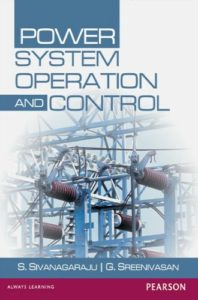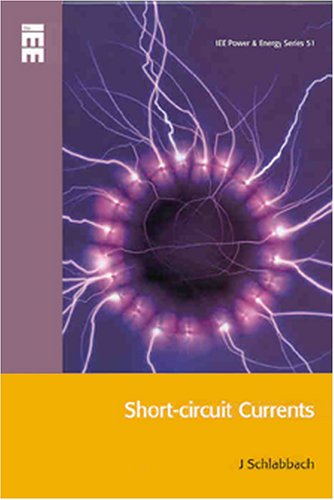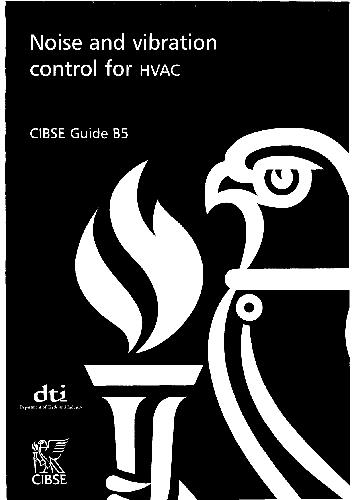| Book Name: | [PDF] Power System Operation and Control Book by Sivanagaraju – Free Download |
| Category: | Power Systems |
| Language: | English |
| Format: | |
| Free Download: | Available |
Power System Operation and Control (PSOC) Textbook Free Download. PSOC Ebook is useful for Undergraduate Courses in Electrical and Electronic Engineering (EEE) Students. The authors clearly explained about this Book by Using simple Language. This Book is also useful to most of the students who were prepared for competitive exams.

Power System Operation and Control by Sivanagaraju and Sreenivasan
| Name of the Book | Power System Operation and Control Textbook |
| Name of the Author | |
| Name of the Publisher | Pearson |
| Book Format | |
| Book Language | English |
Contents Of The Book:
Chapter 1:Economic Aspects.
Chapter 2: Economic Load Dispatch-I.
Chapter 3: Economic Load Dispatch-II.
Chapter 4: Optimal Unit Commitment.
Chapter 5: Optimal Power-Flow Problem—Solution Technique.
Chapter 6: Hydro-Thermal Scheduling.
Chapter 7: Load Frequency Control-I.
Chapter 8: Load Frequency Control-II.
Chapter 9: Reactive Power Compensation.
Chapter 10: Voltage Control.
Chapter 11: Modeling of Prime Movers and Generators.
Chapter 12: Modeling of Speed Governing and Excitation Systems.
Chapter 13: Power System Security and State Estimation.
About Book Chapters :
Chapter 1 introduces the economic aspects of power system and provides definitions for the various terms used in its analysis. It explains reserve requirements, the importance of load forecasting, and its classification.
Chapter 2 describes system variables and their functions. The characteristics of thermal and hydropower units are illustrated in this unit. Non-smooth cost functions with multi-valve effect and with multi-fuel effect are briefly discussed.
This chapter explains the mathematical formulation of economic load dispatch among various units by neglecting transmission losses, and it also gives an overview of the applications of various computational methods to solve the optimization problem.
The flowchart required to obtain the optimal scheduling of generating units is also described here.
Chapter 3 looks at the derivation of the expression for transmission loss and explains the mathematical determination of economic load dispatch taking transmission loss into consideration.
The theory of incremental transmission loss and penalty factor is clearly discussed. It also analyzes the optimal scheduling of generating units, determined with the help of a flowchart.
Chapter 4 expounds on the optimal unit commitment problem and its solution methods by taking a reliable example. Reliability and start-up considerations in optimal unit commitment problems are effectively discussed.
Chapter 5 explains the optimal power-flow problem and its solution techniques with and without inequality constraints.
In this chapter, inequality constraints are considered first on control variables, and then on dependent variables. Kuhn–Tucker conditions for the solution of optimal power flow are presented in this unit.
Chapter 6 spells out the important principle of hydrothermal scheduling and its classification. It discusses the general mathematical formulations and methods of solving long-term and short-term hydro-thermal scheduling problems.
Chapter 7 deals with single-area load frequency control. It describes the characteristics of the speed governor and its adjustment in the case of parallel operating units.
Generator controllers, namely, P–f and Q–V controllers, the speed-governing system model, the turbine model, and the generator–load model and their block diagram representations are clearly discussed.
Steady- and dynamic-state analyses of a single-area load frequency control system are also explained. The chapter also discusses the analysis of integral control of a single-area load frequency control system.
Chapter 8 deals with the response of a two-area load frequency control for uncontrolled and controlled cases very effectively.
A dynamic-state variable model for a two-area load frequency control and for a three-area load frequency control system is derived.
Chapter 9 delineates reactive-power compensation along with the objectives of load compensation.
This chapter discusses uncompensated transmission lines under no-load and loads conditions and compensated transmission lines with the effects of series and shunt compensation using thyristor-controlled reactors and capacitors.
It also elucidates the concept of voltage stability and makes clear how the analysis of voltage stability is carried out using P–V curves and Q–V curves. The relationship between active power, reactive power, and voltage is derived in Chapter 10.
This chapter also speaks about the methods of voltage control and the location of voltage-control equipment.
Chapter 11 deals with the principles of modeling hydro-turbines and steam turbines. It also looks at the modeling of synchronous machines including the simplified model with the effect of saliency.
The determination of self-inductance and mutual inductance, and the development of general machine equations are discussed in this chapter. Park’s transformation and its inverse, the derivations of flux linkage equations and voltage equations of synchronous machines, and the steady-state and dynamic-state model analysis are elucidated.
Chapter 12 offers an insight into the modeling of speed-governing systems for steam- and hydro-turbines. Mechanical–hydraulic-controlled speed-governing systems, electro–hydraulic-controlled speed-governing systems, and the general model for speed-governing systems for steam turbines are explained in detail.
It throws light on excitation system modeling in various aspects such as methods of providing excitation, classification of excitation systems, and various components with their transfer functions. Standard block diagram representations for the different excitation systems are illustrated in this chapter.
Chapter 13 explains the steady-state security analysis and the transient security analysis of a power system. The concept of state estimation is developed in this chapter, and the method of least squares estimation of a system state has been clearly explained.
Buy PaperBook from Amazon : Power System Operation and Control, 1e
Download also Power System Transients Theory and Applications
Free Download POWER SYSTEM OPERATION & CONTROL By S. SIVANAGARAJU & G. SREENIVASAN PDF eBook
Links are Below :
Power System Operation and Control PDF
Author(s): Sreenivasan, G. & Sivanagaraju, S.
Publisher: KhanSR, Year: 2009
ISBN: 978-8131726624
Book – Download
Lecture Note PDF
Related Results : 2 marks for power system operation and control,abstract of power system operation and control,allen j wood power system operation and control,allen j wood power system operation and control pdf,an overview of power system operation and controlbasics of power system operation and control,
Related More Books
See More POST On : Engineering Books









![[PDF] Draw Buildings and Cities in 15 Minutes Draw Buildings and Cities in 15 Minutes pdf](https://www.freepdfbook.com/wp-content/uploads/2021/06/Draw-Buildings-and-Cities-in-15-Minutes-218x150.jpg)








![[PDF] Digital Image Processing An Algorithmic Introduction Using Java Digital Image Processing An Algorithmic Introduction Using Java](https://www.freepdfbook.com/wp-content/uploads/2022/06/Digital-Image-Processing-An-Algorithmic-Introduction-Using-Java.jpg)




![[PDF] 43 Years JEE ADVANCED + JEE MAIN Chapterwise & Topicwise Solved Papers 43 Years JEE ADVANCED (1978-2020) + JEE MAIN Chapterwise & Topicwise Solved Papers Physics PDF](https://www.freepdfbook.com/wp-content/uploads/2022/03/43-Years-JEE-ADVANCED-1978-2020.jpg)

![[PDF] Problems in Physical Chemistry for JEE (Main & Advanced) Problems in Physical Chemistry for JEE (Main & Advanced) Free PDF Book Download](https://www.freepdfbook.com/wp-content/uploads/2022/03/Problems-in-Physical-Chemistry-for-JEE-Main-Advanced.jpg)
![[PDF] Engineering Physics (McGraw Hill)](https://www.freepdfbook.com/wp-content/uploads/2021/05/bafc8c2685bb6823a9c56134f7fba5df.jpeg)

![[PDF] Engineering Chemistry By Shashi Chawla](https://www.freepdfbook.com/wp-content/uploads/2022/05/Theory-And-Practicals-of-Engineering-Chemistry-By-Shashi-Chawla-free-pdf-book.jpeg)
![[PDF] Chemistry: An Introduction to Organic, Inorganic & Physical Chemistry Chemistry: An Introduction to Organic, Inorganic & Physical Chemistry](https://www.freepdfbook.com/wp-content/uploads/2022/04/Chemistry-An-Introduction-to-Organic-Inorganic-Physical-Chemistry.jpg)
![[PDF] Essentials of Physical Chemistry Essentials of Physical Chemistry Free PDF Book by Bahl](https://www.freepdfbook.com/wp-content/uploads/2022/04/Essentials-of-Physical-Chemistry-bahl.jpg)
![[PDF] Biological control of plant-parasitic nematodes: soil ecosystem management in sustainable agriculture Biological control of plant-parasitic nematodes: soil ecosystem management in sustainable agriculture](https://www.freepdfbook.com/wp-content/uploads/2022/05/Biological-control-of-plant-parasitic-nematodes-soil-ecosystem-management-in-sustainable-agriculture.jpg)
![[PDF] Human Anatomy: Color Atlas and Textbook Human Anatomy: Color Atlas and Textbook Free PDF Book](https://www.freepdfbook.com/wp-content/uploads/2022/05/Human-Anatomy-Color-Atlas-and-Textbook.jpg)
![[PDF] Concepts of Biology Book [Free Download]](https://www.freepdfbook.com/wp-content/uploads/2022/05/Concepts-of-Biology.jpg)
![[PDF] Essentials of Biology [Free Download] Essentials of Biology Free PDF BOok Download](https://www.freepdfbook.com/wp-content/uploads/2022/05/Essentials-of-Biology-Free-PDF-Book-Downlaod.jpg)
![[PDF] Human Biology Book [Free Download]](https://www.freepdfbook.com/wp-content/uploads/2022/05/PDF-Human-Biology-Book-Free-Download.jpg)


